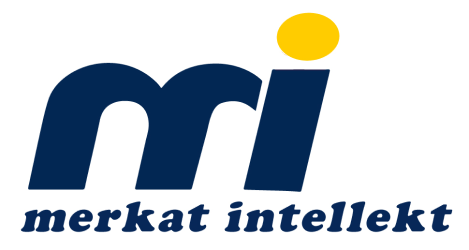Building a minimum viable product (MVP) is a critical step in launching a new product or service. It’s often the only thing that matters when it comes to getting traction with a new venture.
A minimum viable product (MVP) is a version of your product that lets you test if your product is viable using as minimal features as possible. Once you’ve proven that people want what you’re offering, you can build up to a full-fledged feature list of your product. But remember, that MVP you launch into the world still needs to be technically excellent, with a user experience that will keep people coming back for more.
If you’re just getting started with your product, you may not even realize that you need to build a minimum viable product. That’s why we’re going to share some resources that will help guide you through the process of building MVPs.
Market Analysis
Strategic market analysis is the atom of the MVP. It’s a process that requires you to identify your target audience, understand their needs and wants, then build products or services around those needs and wants.
The more time you spend on this stage, the better off you will be. Here are a few tools that can help you:
- Statista: It is one of the world’s largest statistics portals. Providing you with access to relevant data from over 18,000 sources.
- Google Trends: A classic market research tool that can potentially help you to segment your market and the user’s change of needs gradually.
- Remesh: Do you want to have a live conversation with your audience and get qualitative insights into it? Try this smart AI tool that gives you real-time responses for making confident decisions.
- Dossier AI: No experienced market researchers on board? No problem, Dossier AI can help you deliver hyper-relevant market data with an easy interface. With insightful data, you can build a more validated MVP.
- Google Consumer Survey: When you want answers to your business questions, you need to reach everyday people — not just those who choose to participate in research panels.
- Survey Monkey: Create and publish online surveys in minutes, and view results graphically and in real-time. SurveyMonkey provides free online questionnaires and survey software.
- Typeform: Create beautiful, next-generation online forms with Typeform, the form & survey builder that makes asking questions easy & human on any device.
- AYTM (Ask Your Target Market) is a Market Intelligence solution and the leading innovator in online Market Research
- Answer The Public: The significant data is what the market users are talking about. Answer the public helps you to understand what to ask the users and structure them into a foundational insight for your MVP
- Qualaroo Analytics tells you what people are doing, Qualaroo website surveys tell you why we should uncover customer insights that can lead to better business results.
- Qualtrics helps you get the insights you need to make data-driven decisions.
Guide: How to conduct market analysis for MVP: Step by step guide (2022)
Competitor Research
The value proposition of your MVP arises from the insights of your competitor research. Here are the tools that can structure the competitor research process into a tangible output.
- Hubspot Competitive Analysis Templates: An effective analysis needs to help you spread out the thoughts into visible data.
- Quick Search – A powerful search engine that aces important touches points such as market gaps, content ideas, SWOT insights, and online reputations.
- Wappalyzer: This allows you to spy on your competition technology stack. It is a firefox add on that enlightens you with the software and technology used by your competitions
- SimilarWeb: Provides a 360 degree competitive analysis of the process, strategies, positioning, customer segments, and frameworks of your competitors.
- Brand24: Discover your competitor’s online strength and brand reputation score with easy sign-up. With the insights, you can get your MVP ahead in the online game.
- Mattermark: You can leverage machine learning, web crawlers, primary sources, and natural language processing to extract data from millions of news articles and websites that have content on your competitors
Guide: What’s a Competitive Analysis & How Do You Conduct One?
Product Hunt
Listing your MVP in product hunt is a fundamental step in product launch. We have the best list of websites where you can list them.
- Startup StashThe Startup Stash is a collection of resources, tools, and services for entrepreneurs. The website is dedicated to helping you build your business successfully by providing the best information available on the Internet.
- Startup Pitch: The ultimate goal is to empower the startup owners with confident pitch decks and set a foundation for the fundraising journey. This platform allows you to list your startup, where you can not only get prospects but also investors too.
- Disborder: Global platform for every entrepreneur to bring their ideas. The platform supports and encourages the startup products as a token of motivation during crisis times such as a pandemic.
- SaaSHub: One-stop market platform to submit your product and watch the community bring its flair. The platform provides categories, ratings, collect feedback, and assists in listing your product
- StackShare: Originally Leanstack, now revamped as Stackshare, focusses more on technology-based applications. The advantage of listing the product here is you will get a lot of organic reach and word-of-mouth leads.
- Serchen: One of the largest online cloud platforms where millions of software are found. The whole platform is driven based on user needs, so chances of getting leads without churn rate are high if you enlist your product here.
- G2: A classic place to not miss. They have strong credibility in shaping many SaaS products from their early product lifecycle to a successful unicorn.
Customer Journey Map
- UXPRESSIA: You can craft personas, give visual life to the customer insights and map them against the product specifications under one roof. It gives real-time team collaboration without redundancy.
- Lucidchart is a visual workspace that combines diagramming, data visualization, and collaboration to accelerate understanding and drive innovation.
- Sketch: A classic user journey map tool. They are the market leaders in offering the best templates for turning your user interviews into insights and later course them with your product development. Additional perk – a large user-driven community providing real-time examples
- Infogram helps you create and publish beautiful visualizations of your real-time data.
- Omnigraffle is another niche tool effective for mapping customer needs. Their templates are called “stencils,” and the selection is surprisingly extensive, with both paid and free options.
- Smaply: Visualize different types of details e.g., storyboards, channels, live data for KPIs, backstage processes, and more using this visual representation software
- Autopilot: Easy and visual marketing software for automating the customer journey.
Guide: Customer Journey Map Guide With Examples
Proof of Concept Tools
Validating the product idea is inevitable. To know what is possible and whatnot, you need a cumulative insight from your project management, market research data, and technology
- Validation Board: You can define customer problem and solution hypotheses, and identify the core assumptions related to these aspects. It validates and rates every step of your MVP.
- Jupyter: A platform to develop open-source software, open standards, and services and computing across dozens of programming languages.
- UXpin allows you to design lifelike interfaces, prototype with built-in interactions, custom interactions, and animations, and customize elements using CSS code.
- Templates for POC Projects
- Guide: Validate your SaaS startup idea step by step
Prototyping Tools
- Figma: All-in-one tool that makes collaboration easy. Bring your UX designers, developers, and anyone else on your product team using cloud hosting.
- Invision: Best for the products that need extra visual success. It is easy to operate around if you are accustomed to Sketch and Figma. Requires less time than your normal prototyping process
- Justinmind: A simple effective prototyping tool with a drag and drop feature. It offers the sophistication of creating easy web or mobile prototypes without the help of designers or developers.
- Thunkable: Helps entrepreneurs to create a robust mobile application without coding knowledge
Guide: Best practices for prototyping
Landing Page
- Swipe Pages: Effortless mobile-optimized landing page builder at an affordable rate. You cannot find a mobile-optimized landing page builder anywhere else.
- Bubble: Easy builder with a simple user interface. It has proven to be a startup’s best friend because of its efficient operational criteria.
- Unbounce: With its powerful smart AI builder, this tool helps to focus on conversions for your MVP at a very early stage itself
- Leadpages: Already looking for ways to store your prospect details, then go for this tool because it comes with a database and an email list builder.
- 5 Second test: Collect real-time feedback from your website visitors. It gives analytics reports on your landing page UX and marketing content.
- Crazyegg: The best heatmap solution for testing out your landing page experience. It gives an in-depth analysis of your customer behaviors and needs.
- Exit Monitor: You can track the visitor’s mouse movement, navigation and identify the sections of your landing page that are not working.
Guide: The definitive guide to the landing page that converts
Testing Your Minimum Viable Product
- Bugherd: Simplest bug tracker-point and click. Capture client feedback, resolve issues and manage projects visually.
- Rollbar: Collects errors that happen in your application, notifies you, and analyzes them so you can debug and fix them.
- Crashlytics: Helps you deliver a mobile experience to every user. Their solution can start stabilizing your MVP and assist you through the entire product development cycle.
- Usersnap: A visual bug tracker for everyone working on a web project. Usersnap improves your product team personnel and client collaboration effortlessly.
Marketing
- io: You can send targeted human messages to your users, by utilizing their unique interactions with your business.
- Branchmetrics: Creates deep links to help you convert web visitors into app users.
- io: A full-stack marketing & sales automation tool supporting your conversions
- ly: You can schedule your customer’s product demo bookings without back and forth emails or overlapping confusion.
- A/B tasty: Looking to run a quick A/B test in your marketing campaigns?
- Veeroll: Simple and easy video-ad creating tool
- Retargeter: You can capture your first-time user’s data and retarget them for the conversion
- Adespresso: When you have trouble managing and analyzing your social media ads, you can use this tool to automate that work for you
- Perfect audience: Ad management tool that focuses more on identifying your target audience, improving your ad conversions, and reducing the cost per acquisition.
- Active Campaign: An all-in-one platform to run ads, manage prospects, send automated emails and integrate everything to your CRM.
- Getstarted: Directories for best deals. You can save your time in identifying top deals on applications for your product marketing.
- com: Helps to analyze the user flow and the communication of the product against your assumptions.
Guide: Successful MVPs Have a Key Component: Marketing Strategy
Conclusion
Building an MVP (Minimum Viable Product) is a term used by entrepreneurs to describe the first version of their product. This is often referred to as the “minimum viable product” or MVP.
The idea behind the concept is that you should only spend time and effort developing features that are absolutely necessary to launch your product.
This means that you shouldn’t waste time and energy working on things that won’t add value to your product. Instead, focus on building the minimum set of features that will allow you to start generating revenue.
As a result, you’ll save yourself a ton of time and energy while still having a fully functional product.
Hopefully, this article has given you plenty of ways to get started and going no matter where you are in the MVP development process.

